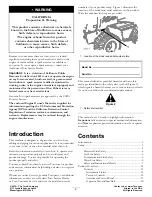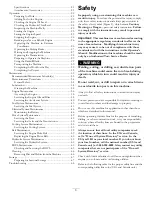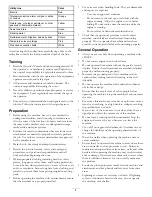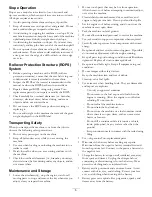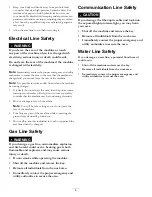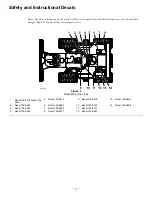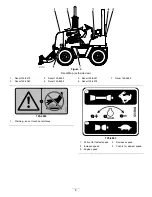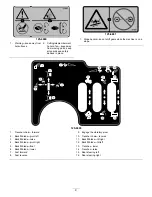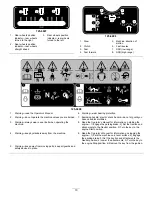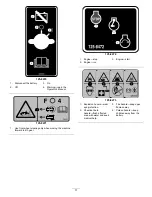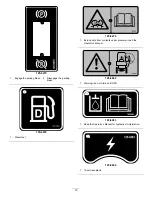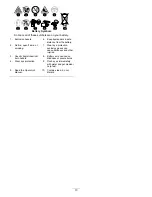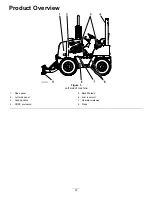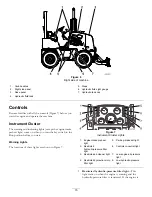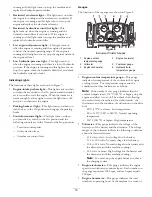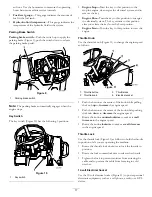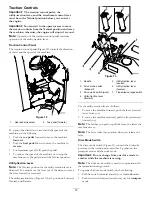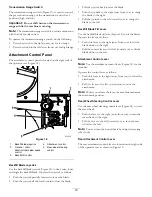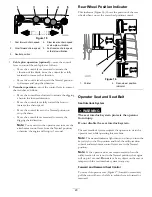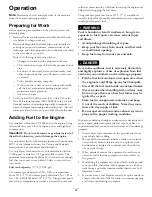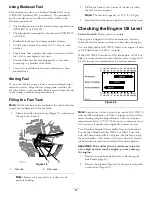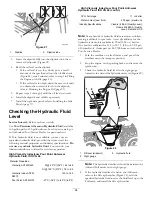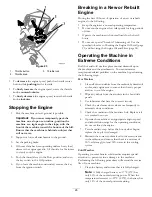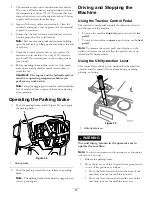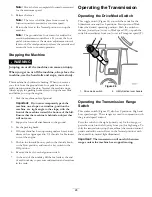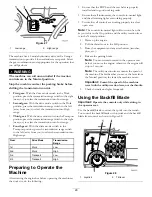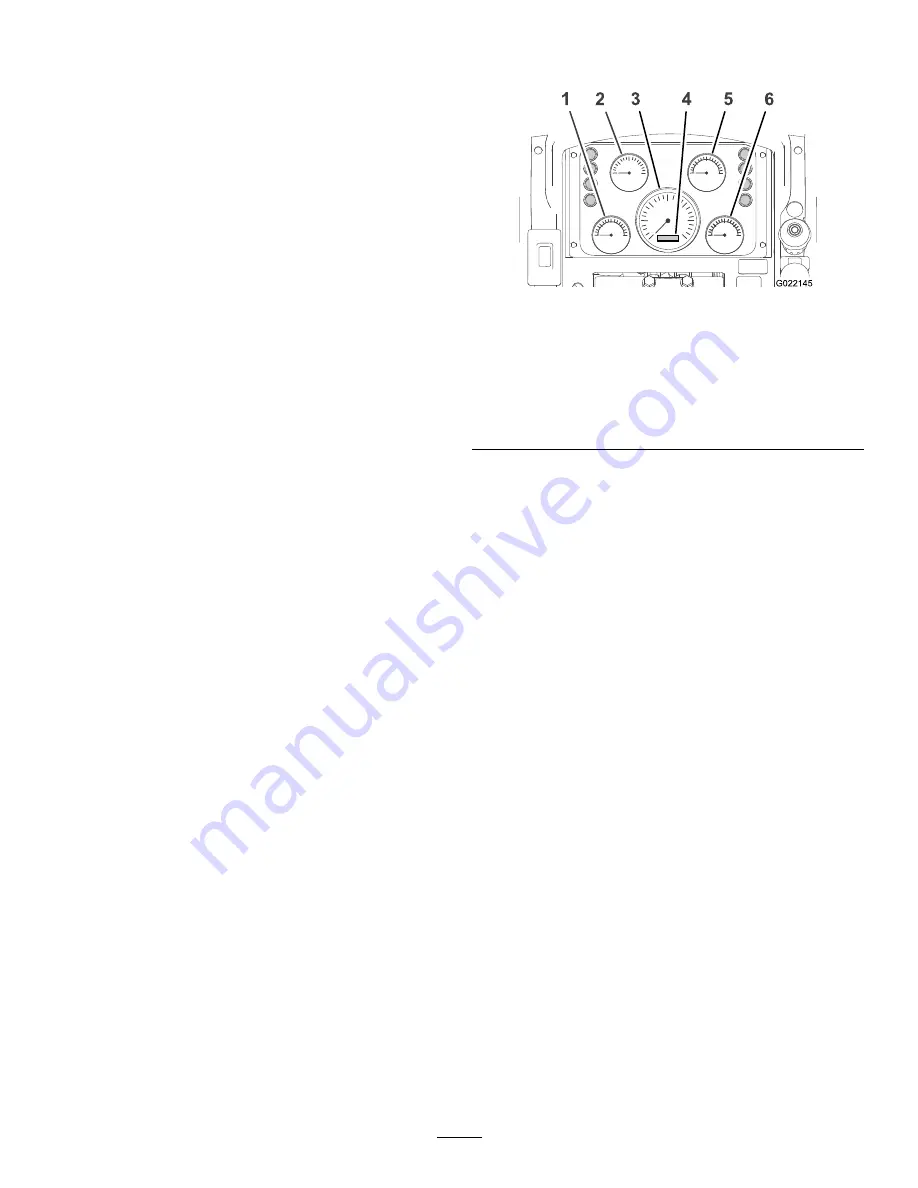
running and this light turns on, stop the machine and
replace the hydraulic-pressure filter.
•
Restricted air-cleaner light
—This light turns on when
the engine is running and the air cleaner is restricted. If
the engine is running and this light turns on, stop the
engine and replace the air-cleaner element.
•
Restricted hydraulic-return filter light
—This
light turns on when the engine is running and the
hydraulic-return filter is restricted. If the engine is
running and this light turns on, stop the machine and
replace the hydraulic-return filter.
•
Low engine-oil pressure light
—This light turns on
when the engine is running and the engine-oil pressure
is below the normal operating range. If the engine is
running and this light turns on, stop the engine and check
the engine-oil level.
•
Low hydraulic-pressure light
—This light turns on
when the engine is running and there is a loss of hydraulic
pressure. If the engine is running and this light turns on,
stop the engine, check the hydraulic fluid level, and check
the hydraulic system for leaks.
Indicating Lights
The locations of these lights are shown in Figure 7.
•
Engine-intake preheat light
—This light turns on when
you turn the key switch to the On position and the intake
air is too cold to start the engine. When the intake air is
warm enough for the engine to start, the light turns off,
and you can then start the engine.
•
Parking-brake set light
—This light turns on when you
turn the key to the On position and engage the parking
brake.
•
Controls-in-neutral light
—This light turns on when
you turn the key switch to the On position and the
following controls are in the Neutral or the Stop position:
–
Traction control pedal
–
Utility-traction lever
–
Attachment control lever
Gauges
The locations of these gauges are shown in Figure 8.
G022145
1
6
2
3
4
5
Figure 8
Instrument Cluster Gauges
1.
Engine-coolant
temperature gauge
4.
Engine hourmeter
2.
Voltmeter
5.
Fuel-level gauge
3.
Engine tachometer
6.
Hydraulic-fluid
temperature gauge
•
Engine-coolant temperature gauge
—This gauge
indicates the temperature of the coolant in the engine
cooling system. The temperature ranges and the
conditions that they indicate are as follows:
Note:
If the needle of this gauge indicates that the
coolant temperature is 116°C (241°F) or higher, stop the
engine and allow it to cool. Then check the following:
the coolant level, the radiator (for debris inside), the
thermostat, and the condition of and tension on the drive
belt.
–
82°C (179°F) or lower: Low temperature
–
82 to 115°C (180° to 240°F): Normal operating
temperature
–
116°C (241°F) or higher: High temperature
•
Voltmeter
—This gauge indicates the voltage of the
battery or of the battery and the alternator. The voltage
ranges of the voltmeter indicate the following conditions
about the electrical system:
–
11.4 volts or less: Low voltage for the battery
–
11.5 to 12.5 volts: Normal voltage for the battery
–
13.8 to 14.4 volts: Normal voltage for the battery and
the alternator (with the machine running)
–
14.5 volts or more: High voltage for the battery and
the alternator (with the machine running)
Note:
You must stop the engine before you check
the charging system.
•
Engine tachometer
—This gauge indicates the engine
speed in revolutions per minute (rpm). Each number on
the gauge represents 1000 rpm, and each space equals
200 rpm.
•
Engine hourmeter
—This gauge indicates the total
number of operating hours of the machine to a tenth of
16
Содержание RT600
Страница 71: ...Notes 71...

